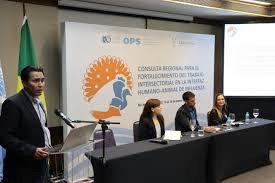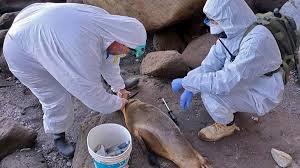
PAHO Conference on HPAI |
The emergence of H5N1 strain avian influenza in Latin America during 2022 resulted in the extensive loss of migratory birds, commercial poultry and marine mammals. Accordingly the Pan American Health Organization (PAHO) organized a regional health conference in Rio de Janeiro on March 16th to review transmissibility among mammals and to assess risk of human susceptibility. Thirty-five nations participated in the Conference attended by world experts on the molecular biology and epidemiology of avian influenza.
During the ongoing panornitic, a large number of diverse migratory and domestic bird species died of the infection. A more serious concern was the extensive mortality among seals and sea lions in which direct animal-to-animal transmission must have occurred to attain the magnitude of losses recorded along the coasts of Chile and Peru and recently extending into Antarctica.

HPAI Marine mammals |
Molecular virologists are concerned over mutations that have occurred as confirmed by sequencing of isolates. Dr. Ralph Vanstreels of the University of California, Davis noted “We are seeing the virus doing little evolutionary steps that are on the long-term movement towards potential human infection.” Nine mutations have been identified in South American strains of H5N1 compared to those circulating in North America. Despite the fact that the World Health Organization regards the risk to humans from the current circulating strains of H5N1 as being ‘low’ pharmaceutical companies are developing avian influenza vaccine that can be administered to humans.
The Conference considered enhanced surveillance, whole genome sequencing of isolates from birds and mammals and protocols to respond to outbreaks including establishing databases and standardized laboratory procedures. To date only two cases of confirmed avian influenza have been diagnosed in humans, both recording a history of contact with wild birds. The patients survived with appropriate supportive and antiviral therapy but the mortality rate among the low number of elderly patients in Asia infected with H7N9 strain exceeds 60 percent.

Dead Seals as a result of HPAI |
It is self-evident that maintaining large commercial flocks exceeding one million hens represents the potential for point mutations and recombinant events to occur. An obvious preventive measure would be vaccination of at-risk flocks in areas with a history of exposure to migratory birds disseminating avian influenza virus.